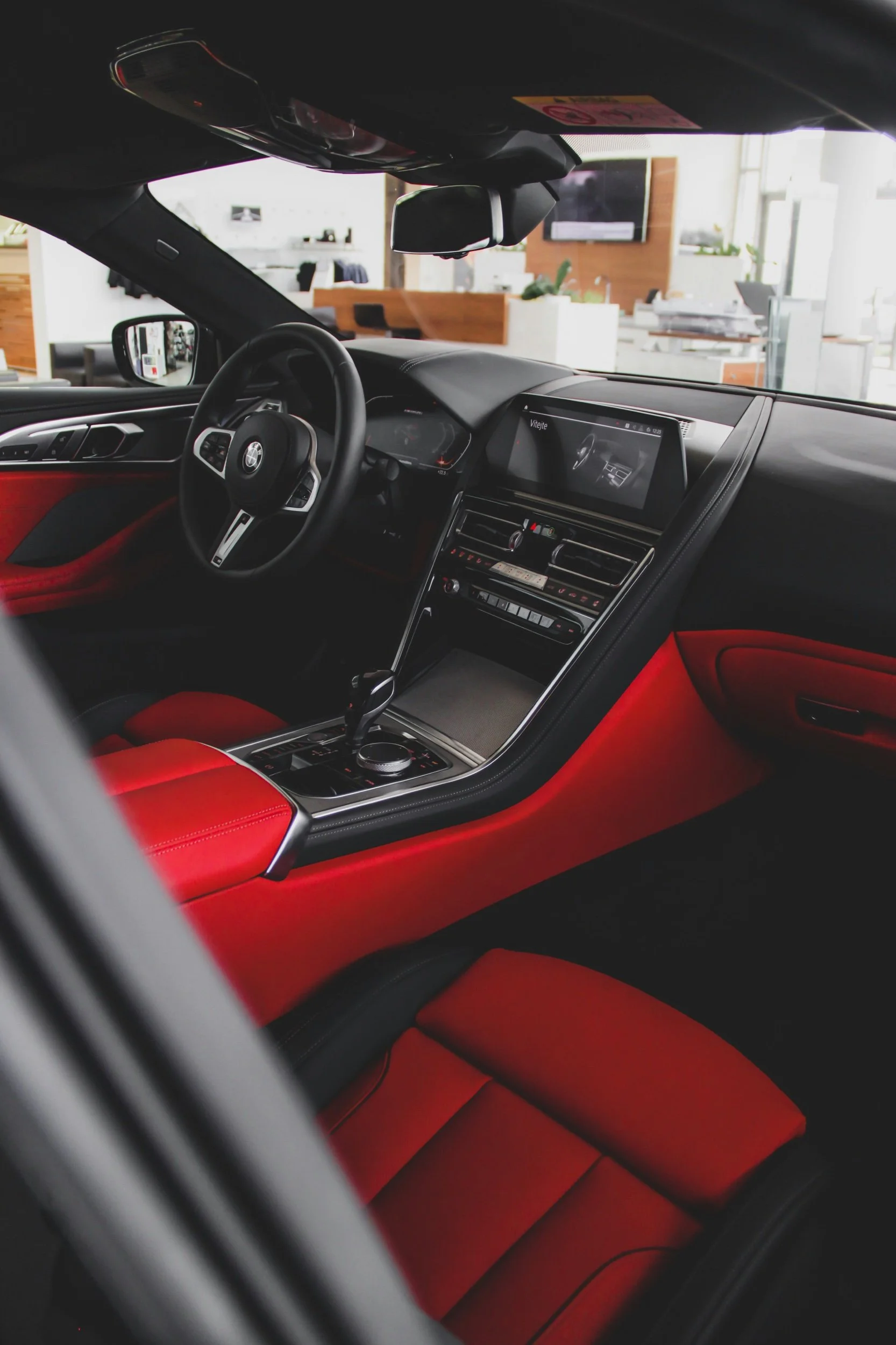What Role Do High-Performance Polymers Play In Modern Yacht Design?
For yacht enthusiasts and industry professionals alike, staying abreast of the latest advancements in marine technology is crucial for understanding the evolution of yacht design and performance. One area of particular interest is the materials used in construction, which leads us to ask: What role do high-performance polymers play in modern yacht design?
High-performance polymers are essential in modern yacht design, offering enhanced strength, reduced weight, and improved durability. These materials are used in hull construction, deck components, and interior fittings, contributing to increased efficiency and performance of yachts.
While this brief answer provides a general understanding, it's important to delve deeper into high-performance polymers' specific applications and benefits in yacht design. By continuing to read, you'll gain valuable insights into how these materials are revolutionizing the marine industry and shaping the future of yacht manufacturing.
How Are High-Performance Polymers Improving Yacht Hull Design?
High-performance polymers have revolutionized yacht hull design by offering a unique combination of strength and lightness. Traditional materials like fiberglass and aluminum have long been the go-to choices for yacht builders, but polymers are rapidly gaining ground due to their superior properties.
Weight reduction is one of the most significant advantages of using high-performance polymers in hull construction. These materials can be up to 50% lighter than traditional alternatives while maintaining excellent structural integrity. This weight saving translates directly into improved fuel efficiency and increased speed, allowing yacht owners to enjoy longer voyages with reduced fuel consumption.
Moreover, polymers exhibit exceptional resistance to corrosion and UV radiation, which are constant challenges in marine environments. This durability ensures that yacht hulls maintain their appearance and structural integrity for longer, reducing maintenance costs and extending the vessel's lifespan.
What Specific High-Performance Polymers Are Used In Yacht Construction?
Several high-performance polymers have found their way into modern yacht construction, each offering unique properties for different applications. One of the most widely used is carbon fiber reinforced polymer (CFRP), known for its incredible strength-to-weight ratio.
CFRP is often used in hull construction, masts, and other load-bearing structures. Its ability to be molded into complex shapes while maintaining structural integrity makes it ideal for creating sleek, aerodynamic designs that enhance a yacht's performance.
Another popular choice is Kevlar, a high-strength synthetic fiber often blended with other materials to create composite structures. Kevlar is particularly valued for its impact resistance and is frequently used in areas of the yacht that may be subject to collision or high stress.
Polyethylene terephthalate (PET) foam core is another polymer gaining traction in yacht design. This lightweight material is used as a core in sandwich construction, providing excellent insulation and buoyancy while reducing overall weight.
How Do High-Performance Polymers Contribute To Sustainability In Yacht Design?
As the marine industry faces increasing pressure to reduce its environmental impact, high-performance polymers are crucial in creating more sustainable yacht designs. These materials contribute to sustainability in several ways, making them an attractive option for environmentally conscious yacht owners and manufacturers.
Firstly, the lightweight nature of high-performance polymers leads to improved fuel efficiency. Yachts constructed with these materials require less energy to propel through water, reducing fuel consumption and lower carbon emissions. This benefits the environment and extends the vessel's range, allowing for longer journeys with less frequent refueling stops.
Secondly, the durability of high-performance polymers contributes to sustainability by extending the lifespan of yachts. These materials are highly resistant to wear, tear, and environmental factors, reducing the need for frequent repairs or replacements. This longevity means fewer resources are required for maintenance, and fewer yachts end up in landfills or scrapyards.
Lastly, some high-performance polymers used in yacht construction are recyclable or made from recycled materials. For instance, PET foam cores can be manufactured from recycled plastic bottles, giving new life to waste materials and reducing the demand for virgin resources. As recycling technologies advance, the potential for creating a circular economy in yacht manufacturing becomes increasingly feasible, further enhancing the industry's sustainability.
What Impact Do High-Performance Polymers Have On Yacht Interior Design?
High-performance polymers are revolutionizing the structural aspects of yacht design and making significant inroads into interior design. These materials offer a perfect blend of aesthetics, functionality, and durability, allowing yacht designers to push the boundaries of luxury and innovation.
One key advantage of using high-performance polymers in yacht interiors is their versatility. These materials can be molded into complex shapes and forms, enabling designers to create unique, flowing spaces that were previously difficult or impossible to achieve with traditional materials. This flexibility allows for more efficient use of space and creates stunning, avant-garde interiors that set modern yachts apart.
Moreover, high-performance polymers offer excellent resistance to moisture, mold, and mildew – common challenges in marine environments. This makes them ideal for use in cabins, bathrooms, and galley areas where hygiene and easy maintenance are crucial. Many of these polymers can also be treated to achieve different textures and finishes, mimicking the look of natural materials like wood or stone while offering superior durability and longevity.
Another significant benefit is the weight savings achieved by using polymer-based interior components. This weight reduction contributes to the yacht's overall efficiency, allowing for better performance and fuel economy without compromising on luxury or comfort.
Choosing the Optimal Manufacturing Method for Yacht Components
When selecting the best manufacturing method for plastic components in yacht design, there's no one-size-fits-all solution. The optimal choice depends on various factors, including the specific application, part size, production volume, material properties, and cost considerations. Here's a guide to help understand which methods are typically best suited for different yacht components:
1. Hull and Large Structural Components: For large, complex structures like hulls or deck sections, resin transfer molding (RTM) or vacuum infusion are often preferred. These methods allow for the creating strong, lightweight parts with consistent quality. They're ideal for working with fiber-reinforced polymers, crucial for structural integrity in yacht design.
2. Interior Fittings and Small Parts: Injection molding is typically the go-to method for smaller, intricate parts such as handles, switches, or decorative elements. It offers high precision and excellent surface finish and is cost-effective for high-volume production. For custom or low-volume parts, 3D printing might be a more suitable option, offering flexibility in design and quick turnaround times.
3. Large, Hollow Components: Rotational molding is often the best choice for items like water tanks or buoys. This method excels at creating seamless, stress-free parts with uniform wall thickness, which is crucial for components that need to withstand pressure or contain liquids.
4. Flat or Slightly Curved Panels: Compression molding or thermoforming are excellent choices for creating large, flat, or slightly curved panels for decking or interior walls. These methods can produce lightweight yet strong components with a good surface finish.
5. Custom or Prototype Parts: For one-off custom parts or prototypes, 3D printing offers unparalleled flexibility. It allows designers to quickly iterate and test complex geometries that might be difficult or expensive to produce with traditional methods.
6. High-Performance, Fiber-Reinforced Components: Automated fiber placement or filament winding techniques are often employed for parts that require exceptional strength-to-weight ratios, such as masts or structural reinforcements. These methods allow for precise control over fiber orientation, optimizing the part's mechanical properties.
It's important to note that the best method often involves combining techniques. For instance, a yacht's construction might use RTM for the hull, injection molding for interior fittings, and 3D printing for custom brackets or prototypes.
Moreover, as technology advances, new hybrid manufacturing methods are emerging. These combine the strengths of multiple techniques to achieve optimal results. For example, some manufacturers are exploring using 3D printing to create molds for RTM or injection molding, allowing for more complex geometries and faster iteration in the design process.
Ultimately, the choice of manufacturing method should be made in close consultation with materials engineers and manufacturing experts. They can provide valuable insights into the trade-offs between performance, cost, and production efficiency for each specific application in yacht design. By carefully selecting the most appropriate manufacturing method for each component, yacht designers and builders can maximize the benefits of high-performance polymers, resulting in vessels that push the boundaries of performance, efficiency, and luxury.
How Are High-Performance Polymers Enhancing Safety Features In Modern Yachts?
Safety is paramount in yacht design, and high-performance polymers are playing an increasingly important role in enhancing the safety features of modern vessels. These materials are used in various applications to improve structural integrity, fire resistance, and overall passenger safety.
One of the most significant safety enhancements comes from using high-performance polymers to construct lifeboats and life rafts. Materials like advanced polyethylene and reinforced composites offer superior strength and buoyancy while being lightweight and resistant to harsh marine conditions. This ensures that safety equipment remains reliable and effective even in extreme situations.
Fire safety is another area where high-performance polymers are making a significant impact. Many of these materials have inherent flame-retardant properties or can be treated to achieve high levels of fire resistance. This is crucial in preventing the spread of fire on board and providing passengers more time to evacuate in an emergency.
Furthermore, high-performance polymers are being used to create impact-resistant structures within yachts. For example, polymer composites are increasingly used to construct bulkheads and other interior partitions. These materials can absorb and dissipate energy from impacts more effectively than traditional materials, potentially reducing injuries in the event of a collision.
Lastly, these polymers also enhance safety through improved visibility and lighting solutions. Transparent polymer sheets with high-impact resistance are used for windows and skylights, providing better visibility while maintaining structural integrity. Polymer-based LED lighting systems are becoming more common, offering energy-efficient, long-lasting illumination that enhances safety during nighttime navigation and in emergencies.
Setting Sail In High-Performance
Now that you understand the crucial role high-performance polymers play in modern yacht design, it's time to take your knowledge to the next level. Consider contacting local yacht manufacturers or attending a boat show to see these innovative materials in action. By experiencing firsthand how high-performance polymers transform yacht design, you'll gain a deeper appreciation for their impact on performance, sustainability, and safety in the marine industry.



